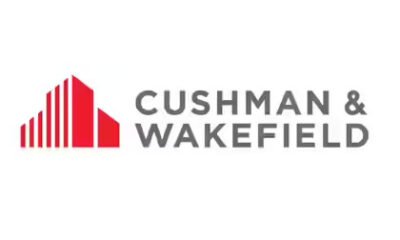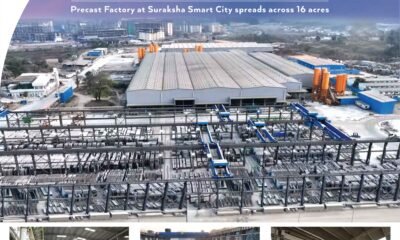News
Affordable Housing Gap Widens, Only 0.36 Homes for Every Unit of Demand: Knight Frank India

New Delhi, August 30, 2025: The supply-to-demand ratio for affordable housing across the top eight cities has plummeted to 0.36 in 2025 (until June), down from 1.05 in 2019, signalling a significant undersupply in the segment.
In its latest report, ‘Affordable Housing: Tackling Urban Housing Deficit Through Supply-Side Reforms’, Knight Frank India, in association with NAREDCO, has highlighted the critical supply challenges in the affordable housing sector.
This shift marks a turning point from the years when developers launched more affordable housing units than were sold driven by schemes such as the Pradhan Mantri Awas Yojana (PMAY). In contrast, 2025 data show launches have collapsed to barely a third of sales, underscoring a deepening imbalance that threatens to impact housing affordability and limit buyer choice.
Demand Policies Help, but Supply Remains a Bottleneck
Over the past decade, policy interventions such as PMAY, Affordable Rental Housing Complexes (ARHCs) and tax benefits have provided critical support to homebuyers. These measures improved affordability and expanded access to credit for economically weaker sections and low-income groups.
However, the report finds that supply continues to lag demand as developers face mounting challenges, including high land costs, limited access to construction finance, regulatory delay and inadequate infrastructure in peripheral urban zones.

Shishir Baijal, CMD, Knight Frank India, said, “Affordable housing is not only a social priority but also an economic necessity. As India urbanises rapidly, the imbalance between supply and demand in this segment poses significant risks to inclusive growth.”
While policy support on the demand side has been commendable, there is a pressing need to address supply-side barriers. Encouraging private sector participation through innovative financing, faster approvals, and land availability will be critical to bridging the gap and ensuring that every Indian has access to dignified housing, he added.

G Hari Babu, President, NAREDCO, said, “At the 17th NAREDCO National Convention, the Knight Frank and NAREDCO report has once again underlined the scale of the affordable housing challenge— a deficit of 9.4 million units that could rise to 30 million by 2030.”
The fact that new supply in this segment has dropped sharply while demand continues to grow is a matter of concern. Limited private investment further widens the gap.
This convention is the right platform to call for bold supply-side reforms—unlocking PSU land for housing, rationalising FSI norms and enabling subsidised construction finance. “These measures can restore affordability, attract private participation and ensure that affordable housing becomes the real engine of inclusive urban growth in India.”
Affordable Urban Housing Deficit to Reach 30 Million Units by 2030
The affordable urban housing shortage is estimated at 9.4 million units with demand expected to rise sharply as urbanisation accelerates. By 2030, cumulative affordable housing demand (including EWS, LIG and MIG households) is projected to reach 30 million units.
The ratio highlights a dramatic collapse in new launches, falling to nearly a third of sales in 2025.
This shortfall, combined with incremental affordable housing demand of 20.7 million units by 2030, will push total affordable housing needs to 30 million units, of which 79 per cent will be concentrated in EWS and LIG households.
Launches Lag Sales in Affordable Housing
The report points to a sharp imbalance between sales and launches. The affordable housing sector faces persistent challenges in expanding supply to keep pace with the fast-growing urban population. Although policy initiatives, like the PMAY and ARHCs, have laid the groundwork, the actual construction and delivery of affordable homes remain far from adequate.
In 2025 (until June), the share of affordable housing, i.e. the value of housing units priced under INR 5 million, stood at 17 per cent, a sharp decline from 52.4 per cent in 2018, indicating a decline in affordable housing supply in cities. The receding number of launches in the affordable housing units is primarily attributed to bottlenecks hindering private participation.
Private Investment in Affordable Housing Remains Minimal
Another key finding of the report is the limited private capital flowing into the sector. Between 2011 and 2024, private equity inflow into affordable housing totalled $1.9 billion, accounting for just 7.8 per cent of the residential sector. Foreign funds accounted for merely 10.2 per cent of the capital inflow into the affordable housing segment between 2019 and 2024.

Gulam Zia, Senior Executive Director, Advisory, Valuation and Research, Knight Frank India, said that the sharp decline in the new supply-to-demand ratio from 1.05 in 2019 to 0.36 in 2025 demonstrates the urgent need for structural reforms.
“High land costs, inadequate institutional investment and infrastructure deficits in peripheral locations continue to restrict developer participation. Without targeted incentives and financing mechanisms, affordable housing will remain underserved. Addressing these gaps can unlock private investment and create a sustainable ecosystem for the segment.”
The report emphasises that unlocking affordable housing supply will require bold reforms and collaborative efforts among government, developers, financial institutions and civil society. It recommends repurposing vacant PSU lands for affordable housing through PPP, increasing the FSI to boost supply and reduce costs and providing subsidised construction finance to developers, drawing on successful global models for project viability and attracting greater institutional capital is also seen as critical.
Together, these measures can create an enabling ecosystem where private participation becomes financially feasible, ensuring that affordable housing supply not only meets the growing demand but also supports India’s long-term vision of inclusive and sustainable urban development.
India’s affordable housing challenge is not insurmountable. With policy alignment, innovative financing and greater private participation, the sector has the potential to not only meet housing demand but also create more equitable, resilient and inclusive cities.

 News2 weeks ago
News2 weeks agoSpectrum@Metro Brings Biggest Dandiya Night to Noida on September 27

 News4 weeks ago
News4 weeks agoIndia’s Logistics & Industrial Leasing Hits 30.7 MSF in H1 2025; Poised to Cross 60 MSF by Year-End: Cushman & Wakefield

 News4 weeks ago
News4 weeks agoTrilive by Tribeca Brings Studio Living to Forefront of Urban Housing Market

 News4 weeks ago
News4 weeks agoSuraksha Group Leads Mechanization of Construction With One of Asia’s Largest Captive Precast Factories

 Guest Column4 weeks ago
Guest Column4 weeks agoThe Connectivity Game: How Expressways are Redefining Urban Aspirations

 Guest Column2 weeks ago
Guest Column2 weeks agoWhat Homebuyers Should Know Before Choosing to Invest in Tier-II Cities

 Guest Column4 weeks ago
Guest Column4 weeks agoFarmstays Redefine Concept Of Experience-Driven Real Estate Across India

 Guest Column3 weeks ago
Guest Column3 weeks agoThe Infrastructure Effect: Jewar Airport, Metro Drive Luxury Housing Boom in Noida-Greater Noida




























